I compiled this information to help newbies rumage through this to hopefully find some info helpful to them in owning or considering owning Coturnix Quail AKA Japanese Quail etc

Coturnix quail in their native lands are migratory birds. They were captured, and kept for their singing ability (which is funny since they don't sing really, but the male will do a "koo-tur-nix!" call during breeding season- hence their name), they were then bred for their egg and meat production. However, as for their call...us as breeders seem to agree it sounds like they are saying "Look-at-me" or "how'm-I-Doin?"

They are native to Europe, Asia, and Africa. All the species from these areas were interbred to make one domestic bird.
They migrate over the mediteranian sea and that's where the Egyptians collected the weak flying in from the sea and where a lot of the domestication seems to come from. Also in Japan.
Coturnix and the coturnix subspecies seem to have been interbred together during domestication.
Coturnixs are known as Pharoah Coturnix, and Jumbo Coturnix to name a few
Pharoah pretty much means the wild type, Jumbos are just larger selectivly bred Coturnix
Colors are as follows (though not limited to-- because many new morphs are able to come up all the time).
*Pharoah Coturnix- Wild color
*Jumbo Brown Coturnix- Wild color but bred larger
*English White- smaller than the below A &M but closely related to it as EWs are the gene that was incorporated to produce the A&Ms...come in pure white to pure white with brown spots mainly on back of head but also can be found on back. Pure white meat.
*A & M- Selectively bred by A & M Texas college for their white meat and pure white feathers- can also have brown spots on back of head and or on the back.
* Golden (aka Manchurian, Golden Speckled)- in normal size and jumbo
- theres also a Cinnamon Gold

*Tibetan (aka British Range)- dark coloring- can come in light and cinnamony forms as well
*Tuxedo- this bird is produced by breeding an A&M to a British range
* Silver
*Cinnamon- this color is also known as Red some people misrepresent it as Fawn/Ginger. Cinnamon also comes in tibetan/range pattern
*read head- from what I read on labratory studies this bird is white with a RED head....interesting!
*black-
 this may be "black at hatch" which is a dark tibetan/range
this may be "black at hatch" which is a dark tibetan/range
*Fawn- this color is known as Rossetta in the tibetan/range form it also has a wild form more solid fawn coloring visit this link to see a Fawn, a normal and a Cinnamon together:
https://www.backyardchickens.com/forum/viewtopic.php?id=207640
Normal adult coturnix quails are around 3 1/2 to 5 ozs
Jumbos are said to get up to an lb in weight
Coturnix breeding season
March through September it seems however if kept under artificial lighting for atleast 14 hours a day, they can lay all year long.
Click HERE for picutres of Browns and Golden roos in breeding plumage
Coturnix hens will lay an egg a day for their lives once they are 6-8 weeks old during breeding season, OR under artificial lighting. Eggs come in speckled, dark brown,blue, blue brown and pure white.
Examples:
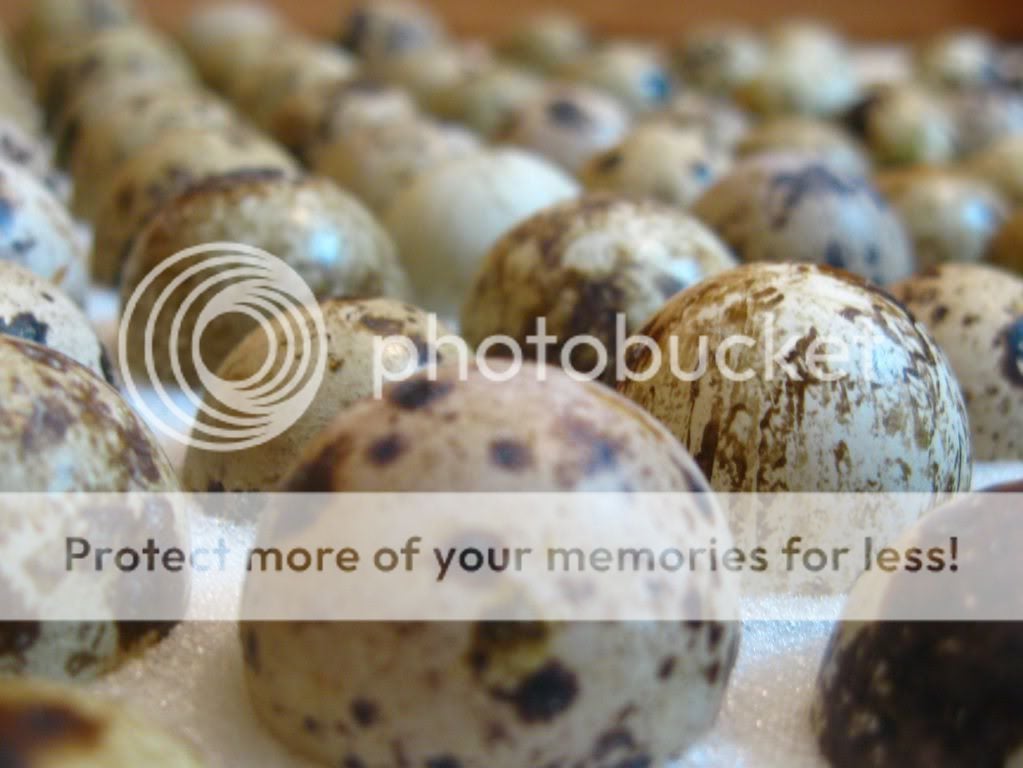

I finnally got a blue egg while I had a white egg!
 !!!!
!!!!
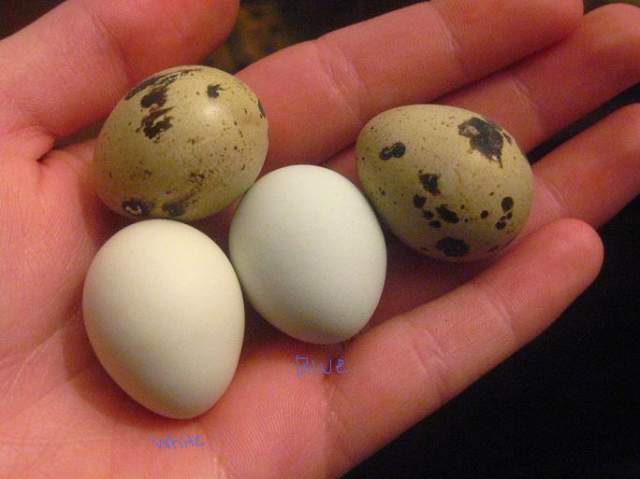
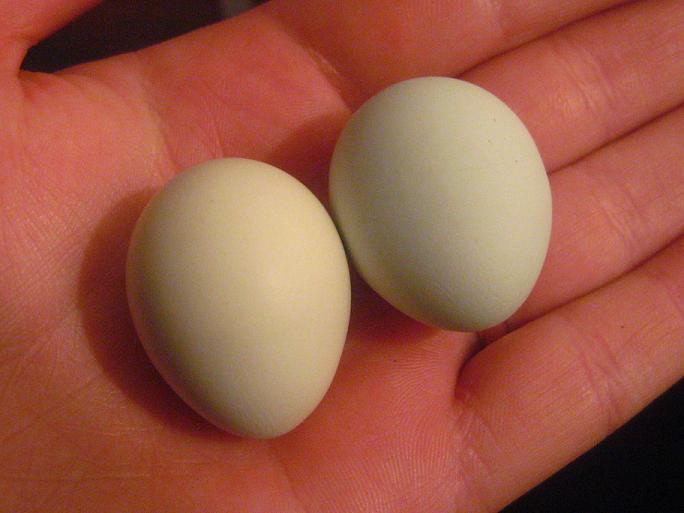
^It may be hard to tell upclose but in smaller pictures you can REALLY tell

The birds seem to loose fertility as they age...a bird over a year old seems to have much less fertility than a younger bird. I personally plan to move out birds over a year old for newbies. As it seems birds at 2 years old dont produce as much, or their eggs dont' seem to be as fertile---not my experience other breeders experiences im taking into consideration and sharing with you all!
 If you let your birds not lay during winter season (by not providing artificial light) it will give them a break from laying eggs and they should live and lay longer for it!
If you let your birds not lay during winter season (by not providing artificial light) it will give them a break from laying eggs and they should live and lay longer for it!

Sexing
Sexing chicks can sometimes be challenging, but in browns and goldens, it's sometimes easy to sex them at 3-4 weeks old just simply by taking a gander at thier breast feathers. These chicks are 3 weeks and 1 day old and it's extremely easy to see who's male and who's female in my batch so hopefully this gives you guys a vantage point for your own batches:
A Video I reciently made on Brown and Golden Coturnix Sexing: http://www.youtube.com/watch?v=LfTv831gilc
Male (note the rusty color coming in):
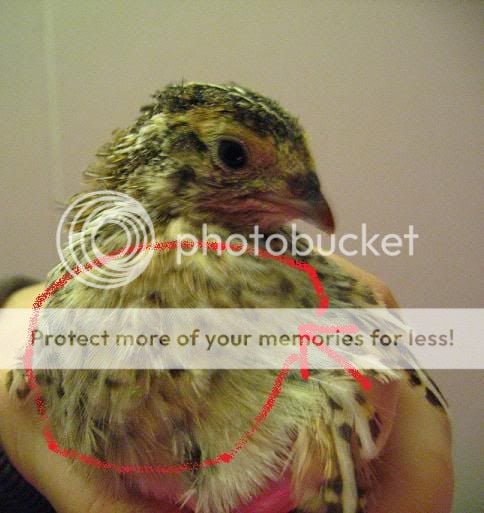
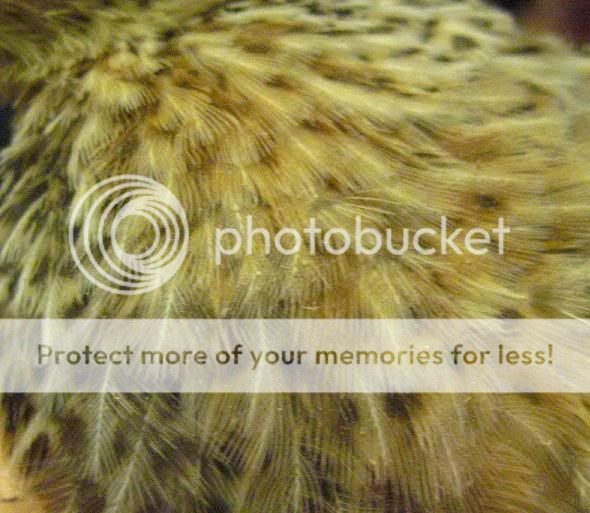
Female (note the obvious spots with no rust coloring):
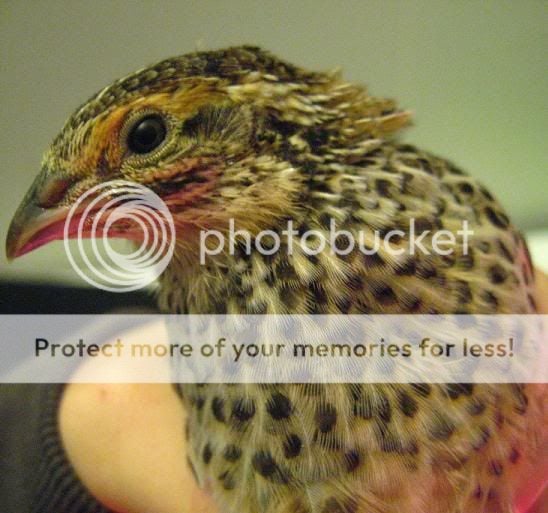
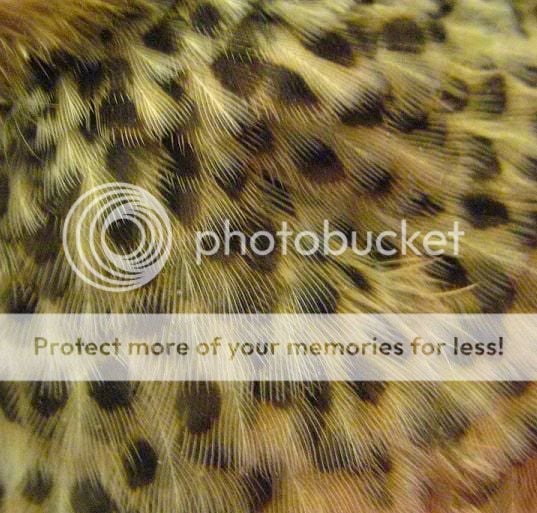
VENT SEXING: https://www.backyardchickens.com/forum/viewtopic.php?id=150049
You can sex males by breast colors in the normal browns, and in some other colors listening for their calls or vent sexing may be needed.
Male coturnix CROWING:

In vent sexing the males will have a small pimple like bump...hens will not. Also the males you can actually press your fingers lightly together near the upper vent and if a white foam (almost looks like foam mousse) comes out that is a male...this substance isn't sperm, however it aids the sperm when breeding.
Foam substance (please note that you will ONLY get this foam when the birds are in breeding season..otherwise you'll just get a spit-like substance that I have learned is NOT the foam even the hens can express this spit substance so it's not a good way to sex...also these males that are in breeding season will have swollen bottoms):
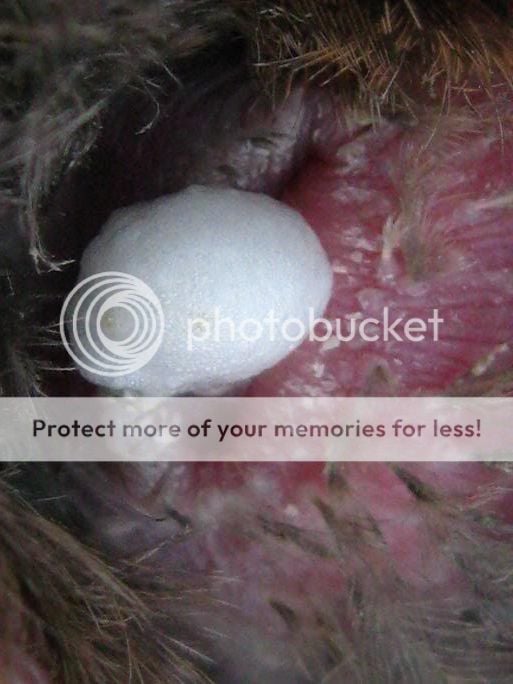
Breeding roos also seem to have a growl of sorts they do... this could bea possible way for you to sex your mature and breeding roos out of your group pen: https://www.backyardchickens.com/forum/viewtopic.php?pid=2335873#p2335873
Normal wild colored males (and goldens) will have a red (rusty) breast simliar to a male american robins breast....the hens will have a speckled breast (similar to a female american robins breast). Oddly enough, american robins are also a good size comparison with the normal wild (pharoah) coturnix quails size- except robins weigh less. Examples:
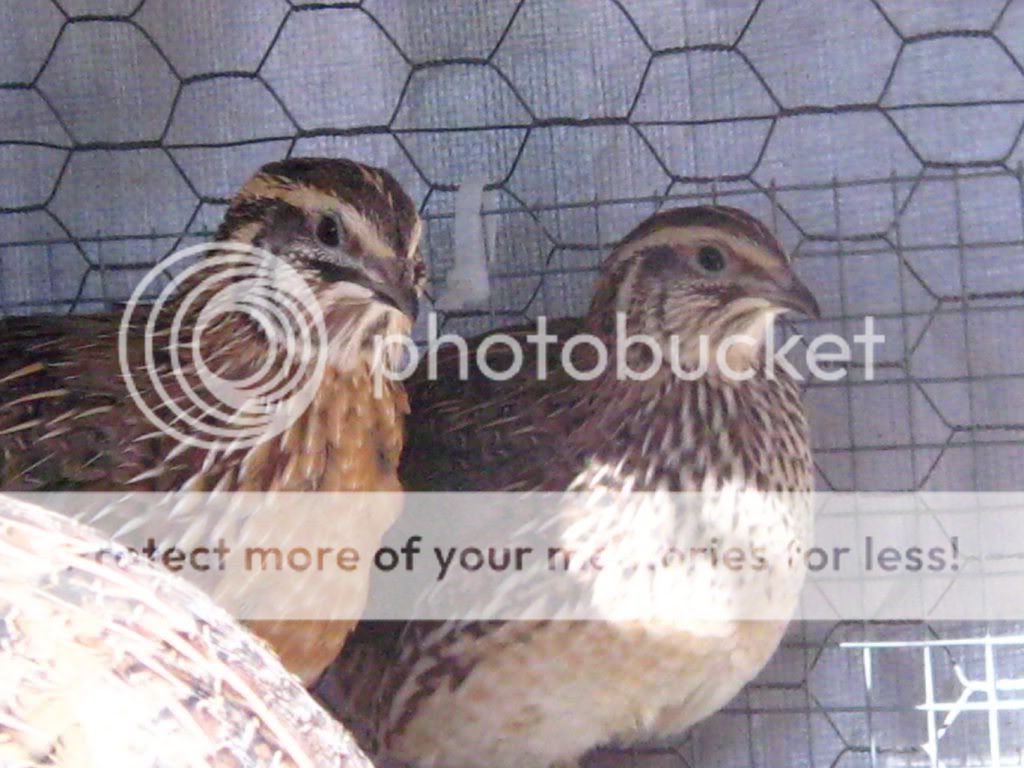 Male on left, hen on right
Male on left, hen on right
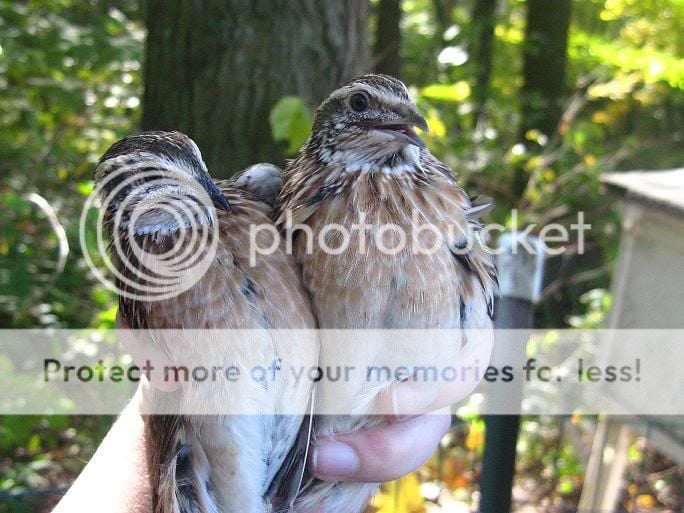
^ Two males
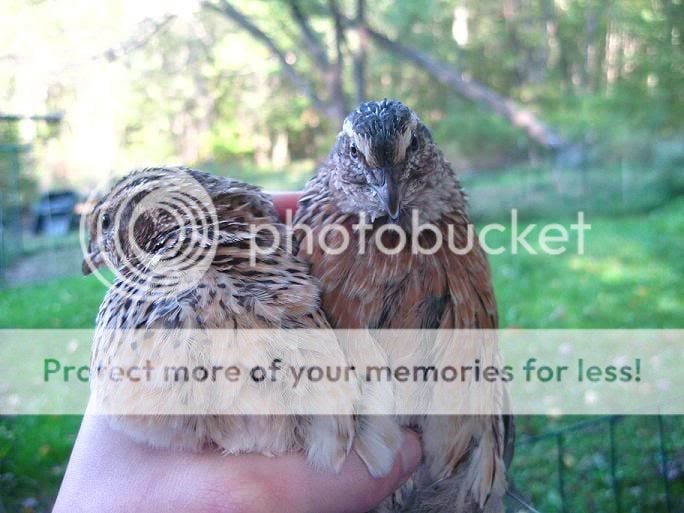
^ Hen on left male on right (bad photo, they were in a molt).
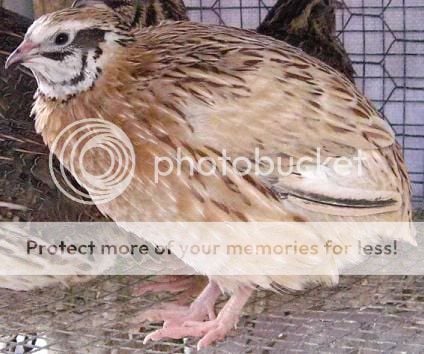
Male golden
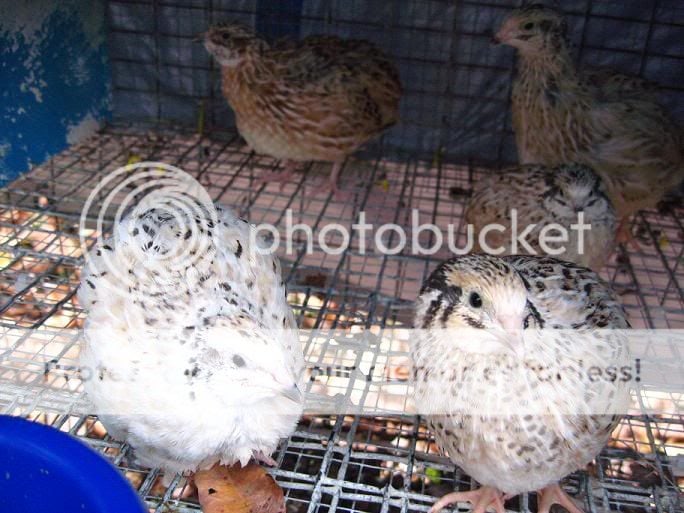 ^ Young hen golden on right, unsure of the sex on the golden on the left as it's almost white instead of golden.
^ Young hen golden on right, unsure of the sex on the golden on the left as it's almost white instead of golden.
 Note the speckled breast on the golden hen just as on the brown hen.
Note the speckled breast on the golden hen just as on the brown hen.
Other colors are very hard to tell visually by feathers, however a breeder I talk to seems to think that Tibetans (british range) coturnix's can be sexed at an early-adult age by the color of their beaks. Supposedly she has come to realize that all her dark beaked tibetans are males, where as her lighter beaks tibetans are hens. Theres no documented proof of this though.
I do believe this theory above to be true....as here is a male---note the BLACK beak:
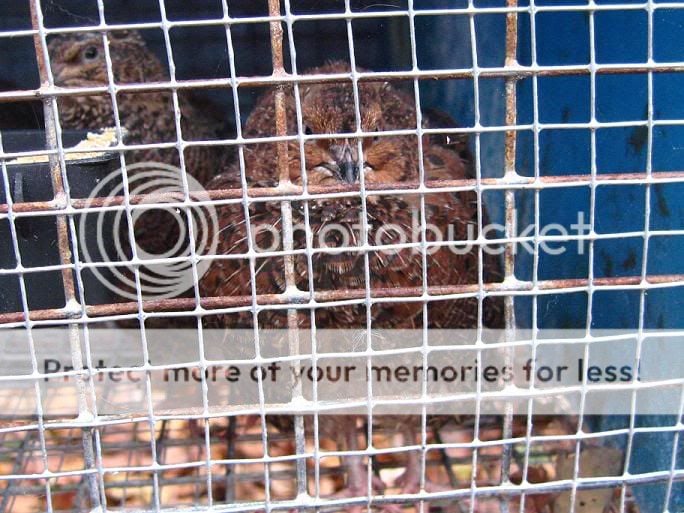
This is a hen tibe note the very dull colored beak not a bold black:
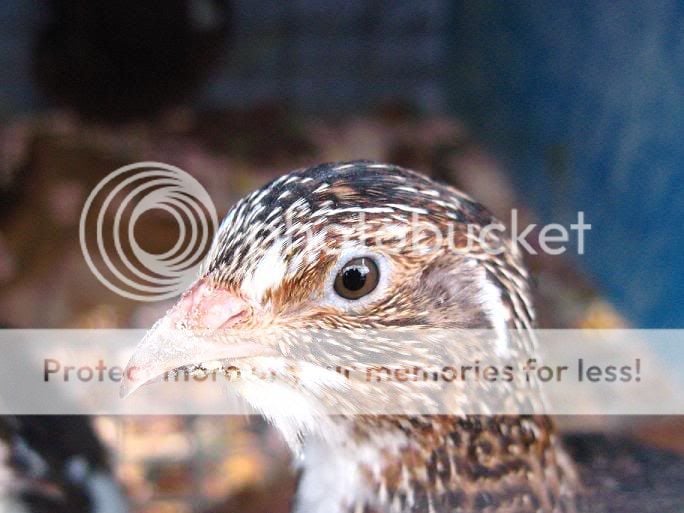
I do not go by the beak method though because I don't mind waiting the 5-6 weeks it takes for the roos to start crowing then I just take the boys out one by one as they crow and put a legband on so I can ID the roos.

Breeding Ratio
Ideal breeding situations seems to be either in LARGE living facilities in collonies more hens than males ofcourse
or seems 1 male to 4-5 hens
I personally have both methods planned for my birds depending on colors and who I want to selectively breed.
Breeding Genetics
There is dominant and recessive colors in genetics. Dominant means that it WILL be the visual color you see. Recessive means that it needs TWO birds with the same color to produce it where as dominant only needs one bird of this color for the color to show up. For example...Golden is a dominant color, you can breed a golden to a normal brown, and produce a golden...because it's dominant. Heres a list of what I have learned is recessive and dominant. Incomplete dominant means mainly that it will cover only certain places of the bird, and that not every chick born will be that specific color (from what I have learned).
Black- Dominant
Cinnamon- Recessive
Extended Brown- Incomplete dominant over normal colored (i dont know much about this one).
White (A & M/English)- Recessive
Red Head- Recessive
Silver- Incomplete Dominant
Tuxedo- Recessive
Golden- Dominant (incomplete... if you breed it to a brown you will get MOSTLY Goldens but some browns)
Range (british range- tibetan) Dominant- incomplete .....if you breed it to white or A & M you'll get tuxedo
As I learn how to produce certain colors I will happily post the findings.
Golden is said to be fatal if breeding Golden to a Golden. Said to loose 25% of hatch, where as others have had 100% hatches out of breeding Golden to Golden. If you want to be on the safe side just breed your Golden to a brown and you'll get mostly Goldens. If not, possibly expect some eggs not to hatch. I've had 100% hatches however, breeding Golden to Golden so I am unsure how true this fatal issue is.
How to produce a Tuxedo- cross an A & M (i was told a nicer cross is with english) with a British Range.
If a brown carries the A & M or white gene, and is crossed with a tibetan (or tuxedo) some of the resulting offspring WILL be tuxedo marked!
 <---prooven this with my own breedings.
<---prooven this with my own breedings.
A Golden bred to any white looks to produce a bird that's mostly white with golden feathers, very pretty! *I have had one in the past but cannot say what was bred to produce it for sure*
Breeding a PURE White (no spots) *either a & m or english white* to another pure white (no spots) will produce 25-50% pure whites, others will more than likely have spots (wild colored spots on back of head neck and possibly back).
Housing
What has been shown to work greatly for others is 1 sq ft per bird.
Wire flooring seems to be ideal, however many also have them on solid ground with bedding like wood shavings (no cedar bedding as it can harm their respiratory systems).
They can be housed indoors or outdoors even in large rabbit hutches.
They do well in winter weather as long as they have shelter and are free from drafts just like any other bird should be cared for in.
Most do keep them outside however mostly because of their high ammonia smell.
Very nice set up built by a BYCer: https://www.backyardchickens.com/forum/viewtopic.php?id=143419
An awesome watering system!
https://www.backyardchickens.com/forum/viewtopic.php?pid=1621838#p1621838
My Pens and Hutch:
Pens on left hutchon right covered in heavy duty tarps to the ground on cold/windy/wet days to keep them sheltered well:

The front of the hutch pen:
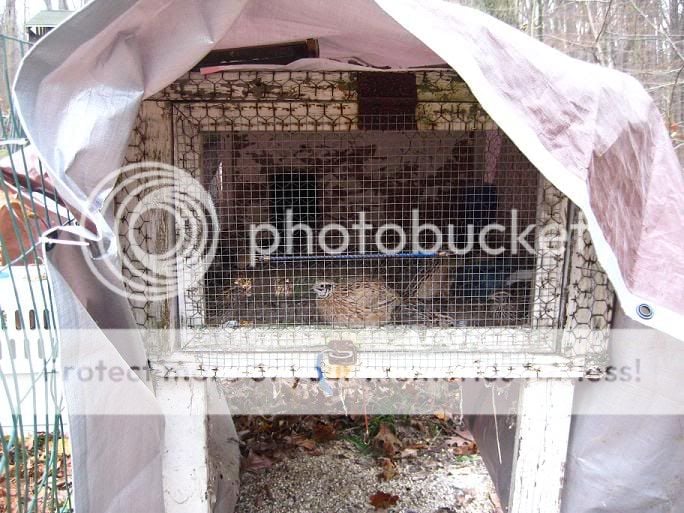
My 6 hole pen with all but one pen occupied:

And here is both pens and hutch before they were occupied:

^^showing you my enclosures to give you ideas
Feeding
Nonmedicated game bird feed is ideal- crumbles is also ideal
I also reccomend grinding up kitten food (kibble or canned) and feed that to them atleast once a week if you can. It's best to feed chicks kitten kibble and adult quail cat kibble as too much fat in kitten food can really harm quail. A breder of 30 years told me that adult quail should only really be supplimented with cat food in the colder months because they need fat to burn for energy to keep warm, but in the summer months it can harm them (too much fat that they can have trouble processing).
Boiled eggs chopped up they also love
Mealworms, crickets, wax worms great treats and great protien
Grit for good digestion, oystershell for extra calcium
Fruit chopped up make a great treat as well as nonpesticied sprayed greens
Millet as a treat- it's not nutritionally complete for a full meal
You can feed chicken crumbles, however you will have to realize that it shouldnt be medicated, and you will need to incorporate more protien as quails need more protien than chickens do from what I have learned.
My experienced reccomendations
Clip their wings if you are planning on keeping them outdoors....all too often my quail enjoy hopping out of their pen when im in cleaning it, which is okay as I keep their wings clipped so they cannot fly away. They are STRONG fliers, and if they get spooked, I know of many breeders who have been devistated to loose a few. If one does get loose, calmly follow it and try to corner it (calmly i cannot stress this enough) and when you're close enough grab for it...idealy a net would be great here however I dont use a net but come to thnk of it i should probably get one ha ha!
Coturnix quail DO NOT PERCH...no need for branches in their enclosure unless you're using them for natural cover.
Fighting can occur...if it does remove the offender, or build a bigger cage with great hidey areas. Coturnix quails can and will kill eachother if left to their own devices. Feather picking is a big sign of stress.
To stimulate egg production indoors (or outdoors during off season) they need atleast 14 hours of light a day, and around 2 weeks you can expect eggs as long as the birds are healthy, mature, HENS, not too old, and fed well.
Here is what a hen announcing her fertility to roos sounds like, so if you start hearing this and haven't got eggs yet they will be on the way in a week-2 weeks. If you see the roo mating the hen (or hens) then you should expect eggs in a week or so! https://www.backyardchickens.com/forum/viewtopic.php?id=174830
Incubation of eggs
*Incubation period is 16-17 days but can go as long as 18 days (almost all of mine hatched at 18 days...so i plan my hatches around 18 days just to be safe)
*Turn eggs atleast 3 times a day
*Stop turning atleast 4 days before eggs are due to hatch
*Every quail breeder has their own humidity and temp preferences....I keep the temps in between 99.5F and 101F...however I try to keep it at 99.5 Fas much as I can. (in my new incubator *a cabinet* I now keep it at 100.6 and I still have gorgeous hatches) Humidity I keep in the 40s until the last four days of incubation where i up it to 60%
It's best to have a towel or a kitchen mat or something similar that the eggs can lay on in the incubator so that when the chicks hatch they dont get their legs stuck in the tiny wire....as their feet are so tiny they will fall through.
Brooder
Tupperware containers, and even aquariums make great brooders
It's ideal to put a soft top on the top of the brooders as spooked chicks will shoot straight up and can injure their heads (deaths have even been reported). I use 1/2" craft foam..and i super glue it or tape it to the top of each brooder works great!
 Kitchen mats also work great. A blanket or towel could work as well.
Kitchen mats also work great. A blanket or towel could work as well.
Just like with chicken chicks...make sure you have bedding, some use paper towels for the first few days to avoid splay leg...i start out with aspen or pine bedding thickly placed on the bottom of the brooder, the chicks walk on it fine as long as it's thick (atleast an inch thick). Avoid using newspaper it's slippy and can cause poo to get stuck on their toes and dry and this makes it very hard for them to walk.
Raising Chicks
Chicks do well on game bird starter crumbles, you can grind it up more for them however they do well on it as is.
They mature at 6 weeks old
They can be let out of a brooder type environment at 4 weeks old but if what you're planing on putting them in next has a big temperature difference, it's important to make the transition gradual (temperature wise). You can do this by moving the brooder light farther and farther away while the chicks are nearing 4 weeks.
IMPORTANT- water needs to be full of marbles, or full of something that's nontoxic to keep chicks from drowning. I personally use craft animal stuffing...works GREAT!
 They can walk on it and not even get really wet and learn quickly (with a few beak dunks) to peck away some of the fibers to drink. UPDATE::: I no longer use anything in the waterers as long as you keep the water AWAY from the heat and have a big enough brooder the chicks don't hang around the waterer enough to drown in my experience.
They can walk on it and not even get really wet and learn quickly (with a few beak dunks) to peck away some of the fibers to drink. UPDATE::: I no longer use anything in the waterers as long as you keep the water AWAY from the heat and have a big enough brooder the chicks don't hang around the waterer enough to drown in my experience.
Speaking of beak dunking, it's smart to show the chicks thier water by lightly holding their beak tip to the water quickly then letting them lift their head to drink it up. Some chicks instinctually know where to drink and eat but others need some help. I assist my first group and the first group usually teaches the second group hatching a few hours later. I poke around like my pointer finger is a beak at their crumbles to get them interested in that.
Keep their brooder clean, I cleaned my brooder of over 30 chicks every 3 days, kept smell down and kept them clean. I change water atleast 3 times a day.
Most reccomend red heat lamps....I used both....had no problem with either. No picking, no bloodshed nothing in either tank. I did notice though in the red heat lamp brooder, the chicks got startled more when the red light went out until they adjusted to normal lights. I perfer normal colored heat lamps myself.
Coturnix Uses
*Genetics- various colors it's a lot of fun
*Eggs (sushi quail eggs are none other than coturnix eggs)!
*Meat- DELISHIOUS are ready for culling at 6 weeks in normal and 8 weeks in jumbo! All are dark meat except the A & M.
*PETs- I must say in my experience they are the most ideal quail to make as a pet...i call them "Mini chickens' for a reason.
*Dog/puppy flush and retrieval training
Processing Your Quail
https://www.backyardchickens.com/forum/viewtopic.php?pid=1554953#p1554953
Color picture examples
Pharoah & Jumbo Brown *wild color/pattern* (also known as XLD or whatever...):
Chick:
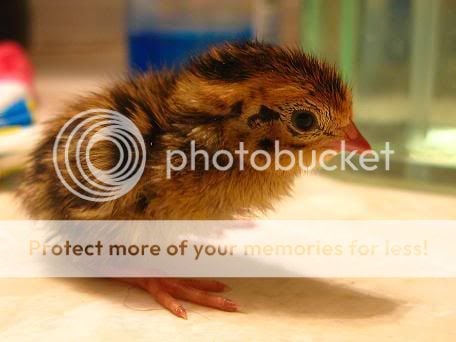
Adult:
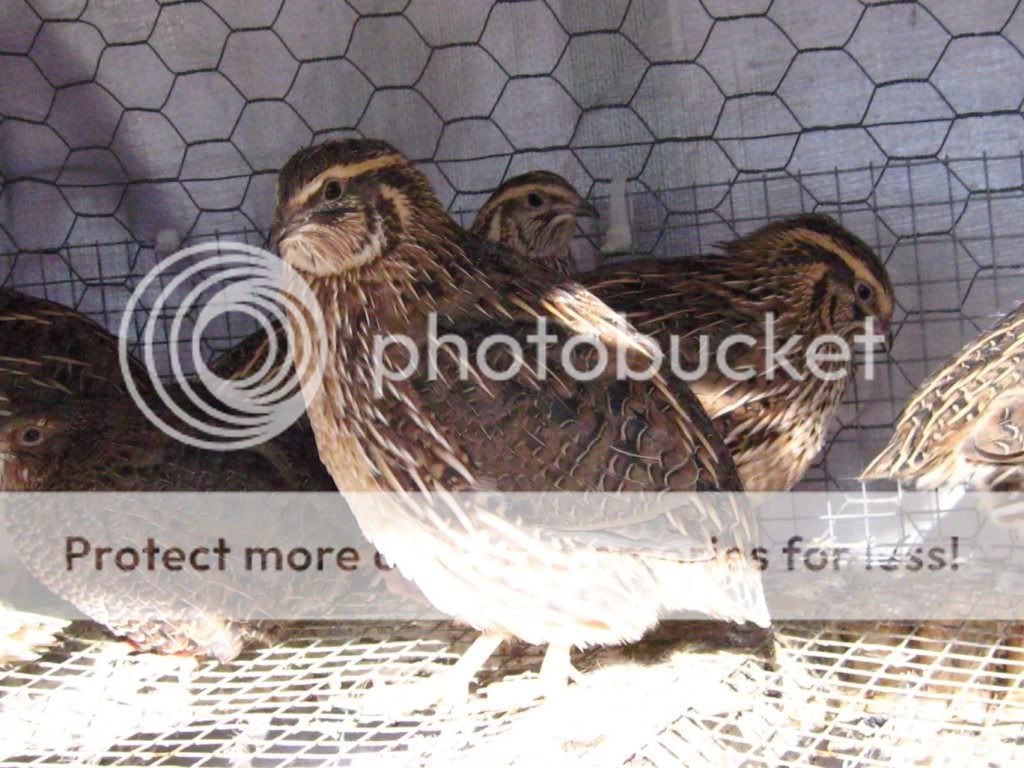
Golden:
Chick:
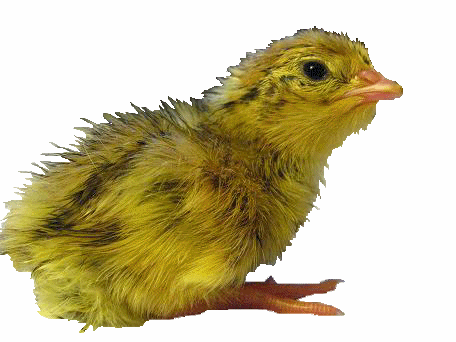
Adult:
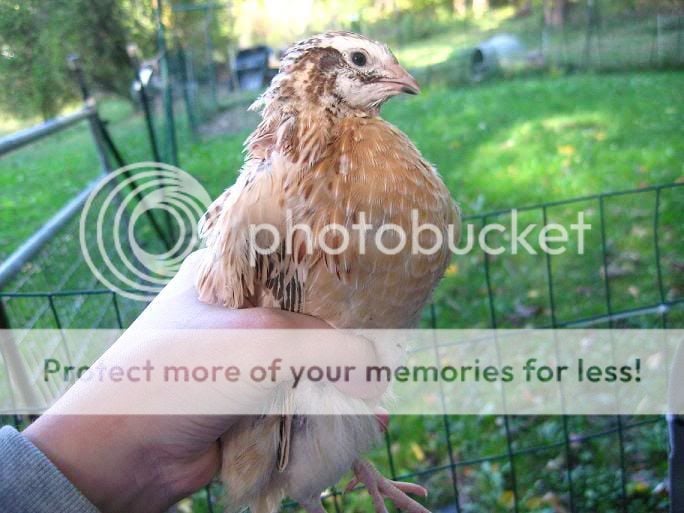
Tibetan (british range):
Chicks:
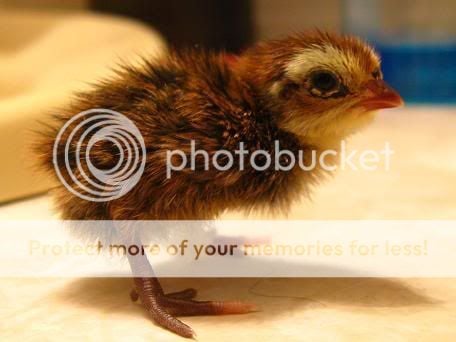
Adults:
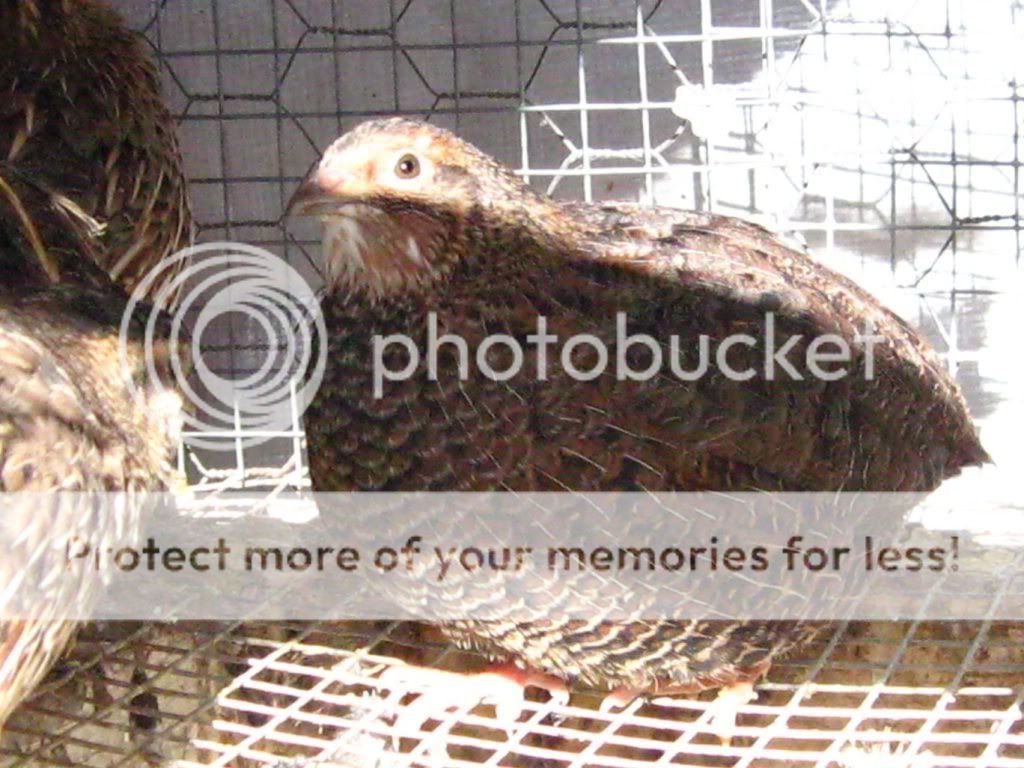
Tuxedo: adult:
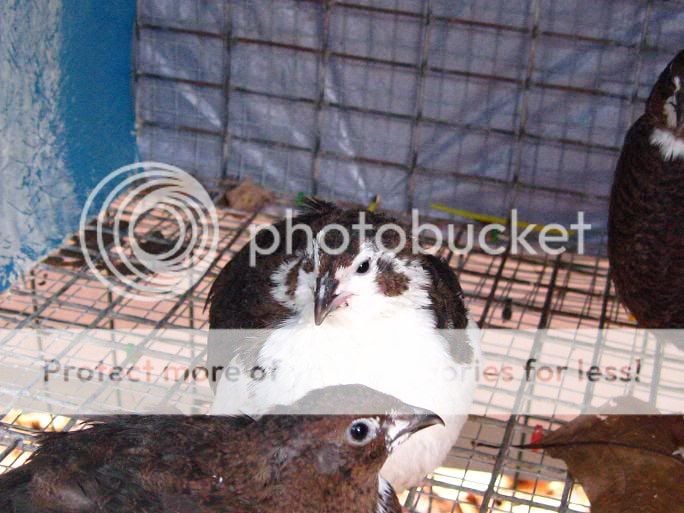
chick:
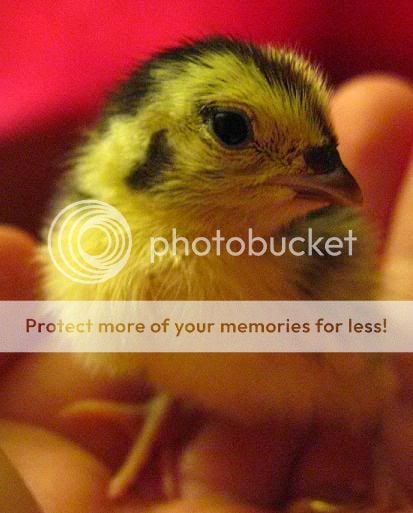
A & M: adult:
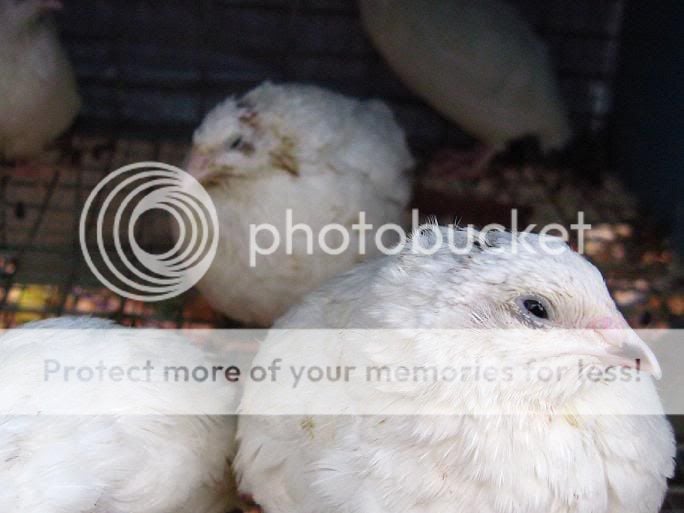 <---these hens were in a breeding cage at the breeders so they have some feathers off of their neck from the male breeding them, once they get all their pretty feathers back in I'll get a better picture.
<---these hens were in a breeding cage at the breeders so they have some feathers off of their neck from the male breeding them, once they get all their pretty feathers back in I'll get a better picture.
chick:
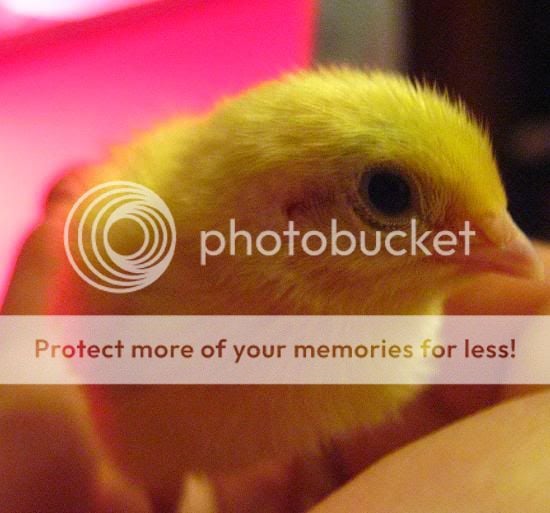
Cinnamon Range (aka Red Golden) ALSO COMES IN TUXEDO!: ADULT:
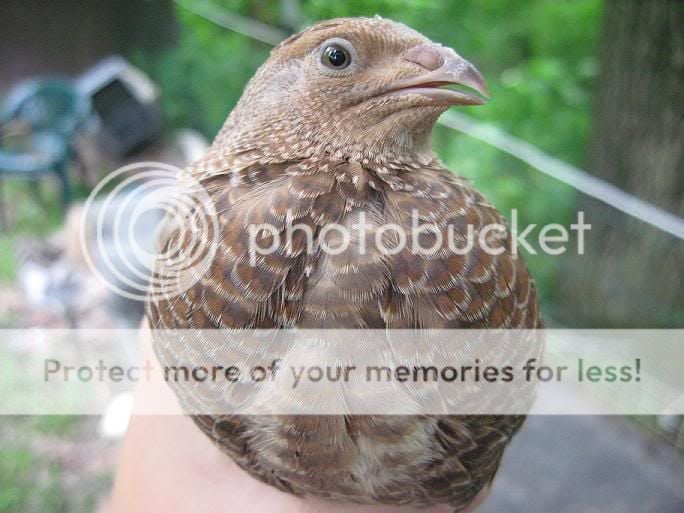
chick:
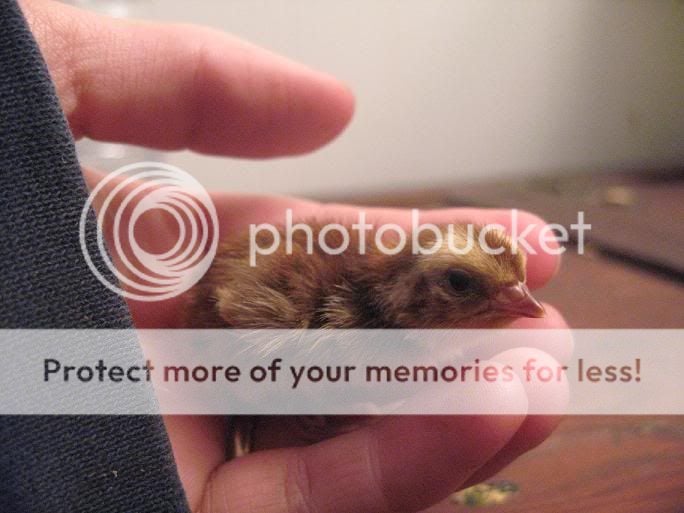
Cinnamon *in wild pattern* (aka Red): Adult: (red bottom of picture above is a normal brown to show the difference):
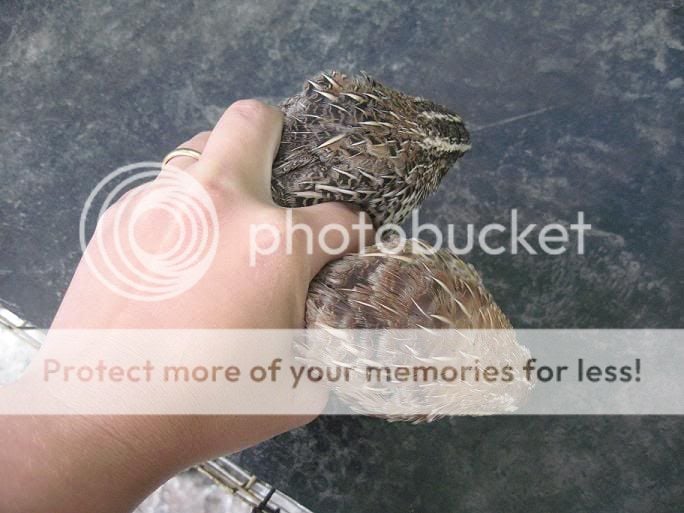
Red: Adult (red on left brown on right):
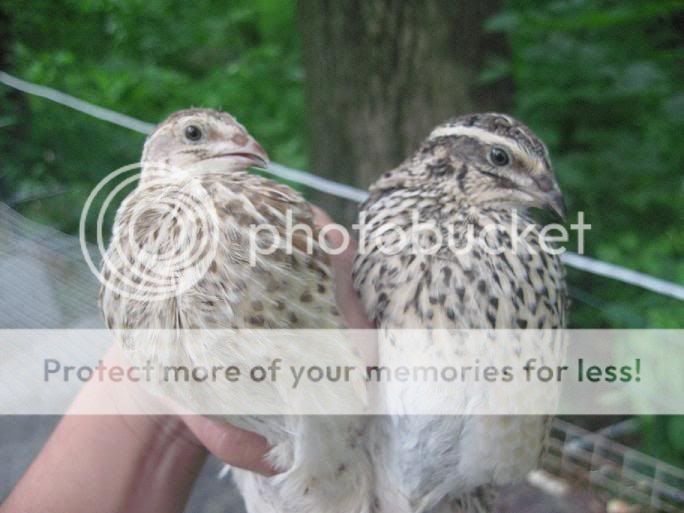
Chick:
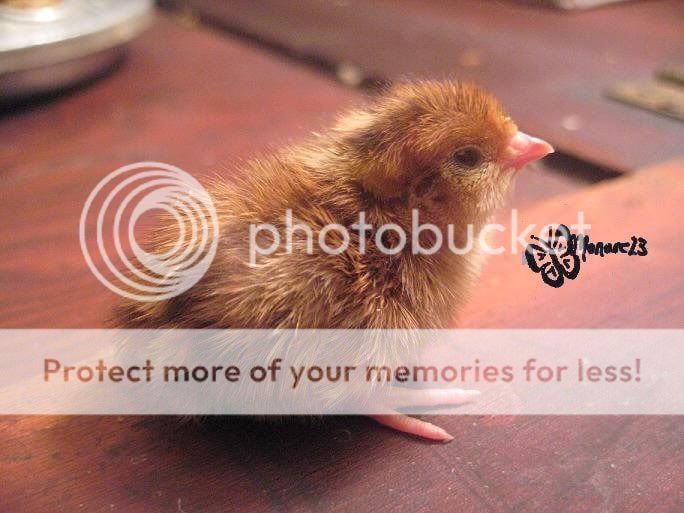
What I'm calling "Red Tibetan" can also be known as Dark Tibetan/Dark Range Adult:
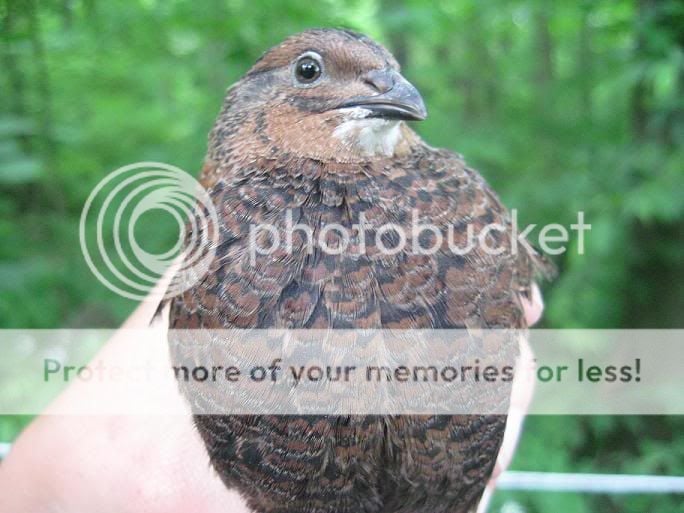
chick:
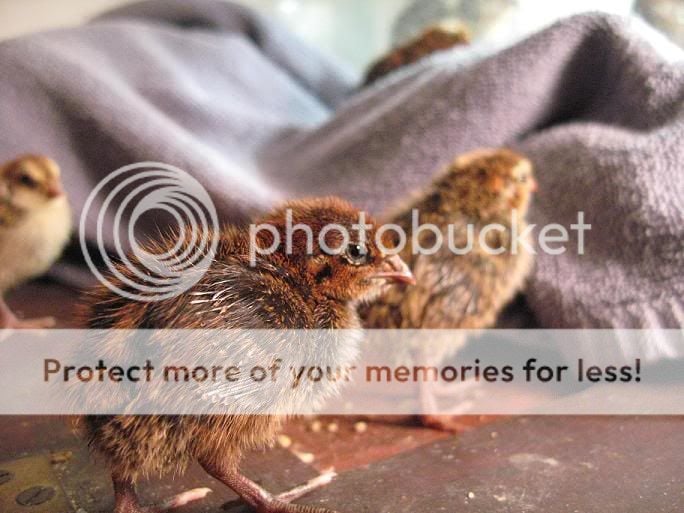
Fawn Range (aka Rosetta) Adult:
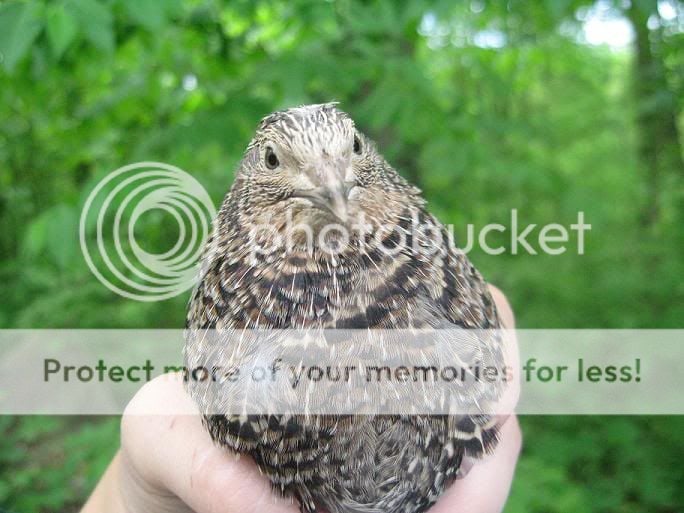
chick:
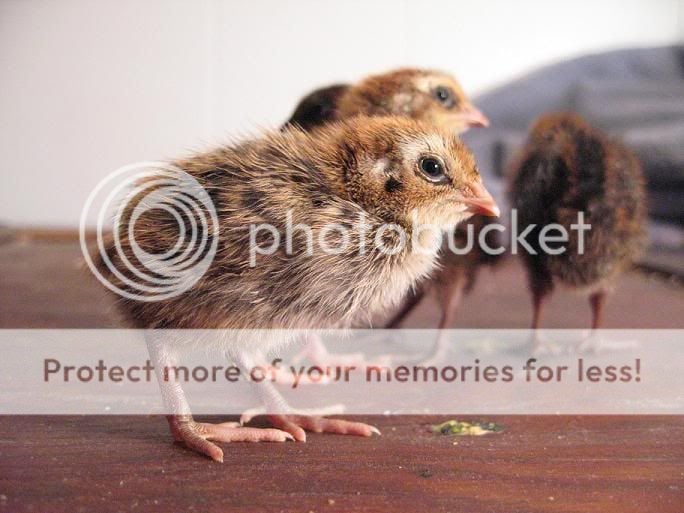
Red and Tibetan/Range Comparisions:
https://www.backyardchickens.com/forum/viewtopic.php?id=199217
Cute facts:
Coturnix quails will call despiratly when they see you (esp if they are hungry)...it reminds me of a purring yelk (Yelk like what a hen turkey does but quieter) but with a purr to it. I will try to get a video of my quails doing this. It sounds pitiful...these guys seem to always be hungry. They are very willing to eat out of your hand as well.
THey dont like being held, and may even act like you're killing them (crying) not all cry but some do and it's also pitiful and sort of comical. Kind of sounds like a "purreeee!" cry.
Sudden light changes (like the flick of a switch while they've been in a dark area for a long time WILL cause them to freak out so try to be considerate lol)!

I've been puked on SEVERAL times by coturnixs that didn't want held. I don't think they use it as a defence mechanism I think they just freak out and upset their corp and BLAHHHH!


They can have little spats over food, however never any feathers pulled or blood shed, they remind me of siblings fighting over a remaining piece of candy.
A happy coturnix will bow and then bop up a few inches in a little dance...it can sometimes look like popcorn popping when more than one at a time is doing it.
They make a small growling sound when they see a bird flying overhead, they cock their head sideways and look up with one eye to the sky and one or two will growl, its' very light sounding but audible....all the quail will freeze in place when the growl goes out and they all watch the sky until the "threat" is gone.
They LOVE to dust bathe, they will dust bathe in just about anything- their food, bedding, sand, dirt. Give them a dusting box with sand in it and watch them play! They can also eat the sand as grit!
 WARNING: they WILL make a mess
WARNING: they WILL make a mess
 .
.
Chicks normally hatch in unision....my experience is they hatch in small batches within just seconds from eachother. They call in the egg to eachother and they seem to synrinise thier hatching this way. Don't worry if they ALL dont hatch together give them time.
 I know of some coturnix quail hatchers that their chicks took DAYS after their true hatch date to hatch....so be pacent I know it's hard though!
I know of some coturnix quail hatchers that their chicks took DAYS after their true hatch date to hatch....so be pacent I know it's hard though!

They sound like crickets, or peeper frogs...esp as chicks, but even adults will make the noise.

Mine huddle in a heep of birds when they're taking a nap...it's extreemly adorable. Most lay on their sides all carefree. *in the pic the small one in the middle is not a coturnix, it's a button quail*
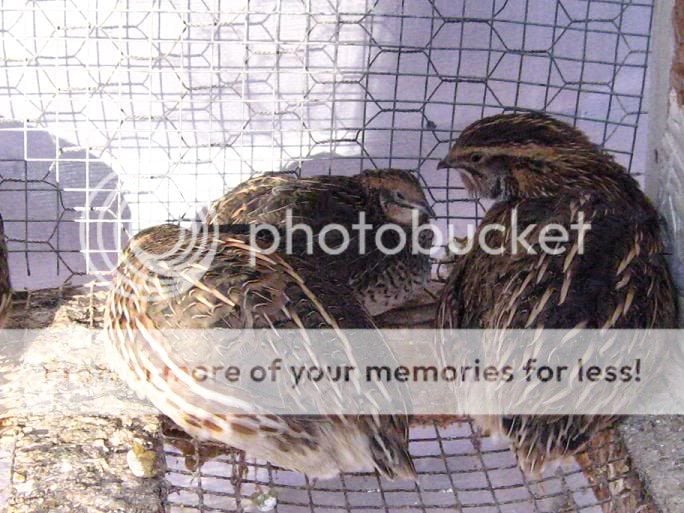
Chick vid:
adult quail vid:

will add more as I get more pictures and information. HOpe this helps newbies!

I removed the state permits and laws for coturnix because it's wayyy too much to keep up with! LOL! Anyone who would like to post thier states laws on coturnix (and other quail) can post on this thread and let others know! thanks!


Coturnix quail in their native lands are migratory birds. They were captured, and kept for their singing ability (which is funny since they don't sing really, but the male will do a "koo-tur-nix!" call during breeding season- hence their name), they were then bred for their egg and meat production. However, as for their call...us as breeders seem to agree it sounds like they are saying "Look-at-me" or "how'm-I-Doin?"

They are native to Europe, Asia, and Africa. All the species from these areas were interbred to make one domestic bird.
They migrate over the mediteranian sea and that's where the Egyptians collected the weak flying in from the sea and where a lot of the domestication seems to come from. Also in Japan.
Coturnix and the coturnix subspecies seem to have been interbred together during domestication.
Coturnixs are known as Pharoah Coturnix, and Jumbo Coturnix to name a few
Pharoah pretty much means the wild type, Jumbos are just larger selectivly bred Coturnix
Colors are as follows (though not limited to-- because many new morphs are able to come up all the time).
*Pharoah Coturnix- Wild color
*Jumbo Brown Coturnix- Wild color but bred larger
*English White- smaller than the below A &M but closely related to it as EWs are the gene that was incorporated to produce the A&Ms...come in pure white to pure white with brown spots mainly on back of head but also can be found on back. Pure white meat.
*A & M- Selectively bred by A & M Texas college for their white meat and pure white feathers- can also have brown spots on back of head and or on the back.
* Golden (aka Manchurian, Golden Speckled)- in normal size and jumbo
- theres also a Cinnamon Gold

*Tibetan (aka British Range)- dark coloring- can come in light and cinnamony forms as well
*Tuxedo- this bird is produced by breeding an A&M to a British range
* Silver
*Cinnamon- this color is also known as Red some people misrepresent it as Fawn/Ginger. Cinnamon also comes in tibetan/range pattern
*read head- from what I read on labratory studies this bird is white with a RED head....interesting!
*black-

*Fawn- this color is known as Rossetta in the tibetan/range form it also has a wild form more solid fawn coloring visit this link to see a Fawn, a normal and a Cinnamon together:
https://www.backyardchickens.com/forum/viewtopic.php?id=207640
Normal adult coturnix quails are around 3 1/2 to 5 ozs
Jumbos are said to get up to an lb in weight
Coturnix breeding season
March through September it seems however if kept under artificial lighting for atleast 14 hours a day, they can lay all year long.
Click HERE for picutres of Browns and Golden roos in breeding plumage
Coturnix hens will lay an egg a day for their lives once they are 6-8 weeks old during breeding season, OR under artificial lighting. Eggs come in speckled, dark brown,blue, blue brown and pure white.
Examples:


I finnally got a blue egg while I had a white egg!



^It may be hard to tell upclose but in smaller pictures you can REALLY tell

The birds seem to loose fertility as they age...a bird over a year old seems to have much less fertility than a younger bird. I personally plan to move out birds over a year old for newbies. As it seems birds at 2 years old dont produce as much, or their eggs dont' seem to be as fertile---not my experience other breeders experiences im taking into consideration and sharing with you all!


Sexing
Sexing chicks can sometimes be challenging, but in browns and goldens, it's sometimes easy to sex them at 3-4 weeks old just simply by taking a gander at thier breast feathers. These chicks are 3 weeks and 1 day old and it's extremely easy to see who's male and who's female in my batch so hopefully this gives you guys a vantage point for your own batches:
A Video I reciently made on Brown and Golden Coturnix Sexing: http://www.youtube.com/watch?v=LfTv831gilc
Male (note the rusty color coming in):


Female (note the obvious spots with no rust coloring):


VENT SEXING: https://www.backyardchickens.com/forum/viewtopic.php?id=150049
You can sex males by breast colors in the normal browns, and in some other colors listening for their calls or vent sexing may be needed.
Male coturnix CROWING:

In vent sexing the males will have a small pimple like bump...hens will not. Also the males you can actually press your fingers lightly together near the upper vent and if a white foam (almost looks like foam mousse) comes out that is a male...this substance isn't sperm, however it aids the sperm when breeding.
Foam substance (please note that you will ONLY get this foam when the birds are in breeding season..otherwise you'll just get a spit-like substance that I have learned is NOT the foam even the hens can express this spit substance so it's not a good way to sex...also these males that are in breeding season will have swollen bottoms):

Breeding roos also seem to have a growl of sorts they do... this could bea possible way for you to sex your mature and breeding roos out of your group pen: https://www.backyardchickens.com/forum/viewtopic.php?pid=2335873#p2335873
Normal wild colored males (and goldens) will have a red (rusty) breast simliar to a male american robins breast....the hens will have a speckled breast (similar to a female american robins breast). Oddly enough, american robins are also a good size comparison with the normal wild (pharoah) coturnix quails size- except robins weigh less. Examples:


^ Two males

^ Hen on left male on right (bad photo, they were in a molt).

Male golden


Other colors are very hard to tell visually by feathers, however a breeder I talk to seems to think that Tibetans (british range) coturnix's can be sexed at an early-adult age by the color of their beaks. Supposedly she has come to realize that all her dark beaked tibetans are males, where as her lighter beaks tibetans are hens. Theres no documented proof of this though.
I do believe this theory above to be true....as here is a male---note the BLACK beak:

This is a hen tibe note the very dull colored beak not a bold black:

I do not go by the beak method though because I don't mind waiting the 5-6 weeks it takes for the roos to start crowing then I just take the boys out one by one as they crow and put a legband on so I can ID the roos.

Breeding Ratio
Ideal breeding situations seems to be either in LARGE living facilities in collonies more hens than males ofcourse
or seems 1 male to 4-5 hens
I personally have both methods planned for my birds depending on colors and who I want to selectively breed.
Breeding Genetics
There is dominant and recessive colors in genetics. Dominant means that it WILL be the visual color you see. Recessive means that it needs TWO birds with the same color to produce it where as dominant only needs one bird of this color for the color to show up. For example...Golden is a dominant color, you can breed a golden to a normal brown, and produce a golden...because it's dominant. Heres a list of what I have learned is recessive and dominant. Incomplete dominant means mainly that it will cover only certain places of the bird, and that not every chick born will be that specific color (from what I have learned).
Black- Dominant
Cinnamon- Recessive
Extended Brown- Incomplete dominant over normal colored (i dont know much about this one).
White (A & M/English)- Recessive
Red Head- Recessive
Silver- Incomplete Dominant
Tuxedo- Recessive
Golden- Dominant (incomplete... if you breed it to a brown you will get MOSTLY Goldens but some browns)
Range (british range- tibetan) Dominant- incomplete .....if you breed it to white or A & M you'll get tuxedo
As I learn how to produce certain colors I will happily post the findings.
Golden is said to be fatal if breeding Golden to a Golden. Said to loose 25% of hatch, where as others have had 100% hatches out of breeding Golden to Golden. If you want to be on the safe side just breed your Golden to a brown and you'll get mostly Goldens. If not, possibly expect some eggs not to hatch. I've had 100% hatches however, breeding Golden to Golden so I am unsure how true this fatal issue is.
How to produce a Tuxedo- cross an A & M (i was told a nicer cross is with english) with a British Range.
If a brown carries the A & M or white gene, and is crossed with a tibetan (or tuxedo) some of the resulting offspring WILL be tuxedo marked!

A Golden bred to any white looks to produce a bird that's mostly white with golden feathers, very pretty! *I have had one in the past but cannot say what was bred to produce it for sure*
Breeding a PURE White (no spots) *either a & m or english white* to another pure white (no spots) will produce 25-50% pure whites, others will more than likely have spots (wild colored spots on back of head neck and possibly back).
Housing
What has been shown to work greatly for others is 1 sq ft per bird.
Wire flooring seems to be ideal, however many also have them on solid ground with bedding like wood shavings (no cedar bedding as it can harm their respiratory systems).
They can be housed indoors or outdoors even in large rabbit hutches.
They do well in winter weather as long as they have shelter and are free from drafts just like any other bird should be cared for in.
Most do keep them outside however mostly because of their high ammonia smell.
Very nice set up built by a BYCer: https://www.backyardchickens.com/forum/viewtopic.php?id=143419
An awesome watering system!
https://www.backyardchickens.com/forum/viewtopic.php?pid=1621838#p1621838
My Pens and Hutch:
Pens on left hutchon right covered in heavy duty tarps to the ground on cold/windy/wet days to keep them sheltered well:

The front of the hutch pen:

My 6 hole pen with all but one pen occupied:

And here is both pens and hutch before they were occupied:

^^showing you my enclosures to give you ideas
Feeding
Nonmedicated game bird feed is ideal- crumbles is also ideal
I also reccomend grinding up kitten food (kibble or canned) and feed that to them atleast once a week if you can. It's best to feed chicks kitten kibble and adult quail cat kibble as too much fat in kitten food can really harm quail. A breder of 30 years told me that adult quail should only really be supplimented with cat food in the colder months because they need fat to burn for energy to keep warm, but in the summer months it can harm them (too much fat that they can have trouble processing).
Boiled eggs chopped up they also love
Mealworms, crickets, wax worms great treats and great protien
Grit for good digestion, oystershell for extra calcium
Fruit chopped up make a great treat as well as nonpesticied sprayed greens
Millet as a treat- it's not nutritionally complete for a full meal
You can feed chicken crumbles, however you will have to realize that it shouldnt be medicated, and you will need to incorporate more protien as quails need more protien than chickens do from what I have learned.
My experienced reccomendations
Clip their wings if you are planning on keeping them outdoors....all too often my quail enjoy hopping out of their pen when im in cleaning it, which is okay as I keep their wings clipped so they cannot fly away. They are STRONG fliers, and if they get spooked, I know of many breeders who have been devistated to loose a few. If one does get loose, calmly follow it and try to corner it (calmly i cannot stress this enough) and when you're close enough grab for it...idealy a net would be great here however I dont use a net but come to thnk of it i should probably get one ha ha!
Coturnix quail DO NOT PERCH...no need for branches in their enclosure unless you're using them for natural cover.
Fighting can occur...if it does remove the offender, or build a bigger cage with great hidey areas. Coturnix quails can and will kill eachother if left to their own devices. Feather picking is a big sign of stress.
To stimulate egg production indoors (or outdoors during off season) they need atleast 14 hours of light a day, and around 2 weeks you can expect eggs as long as the birds are healthy, mature, HENS, not too old, and fed well.
Here is what a hen announcing her fertility to roos sounds like, so if you start hearing this and haven't got eggs yet they will be on the way in a week-2 weeks. If you see the roo mating the hen (or hens) then you should expect eggs in a week or so! https://www.backyardchickens.com/forum/viewtopic.php?id=174830
Incubation of eggs
*Incubation period is 16-17 days but can go as long as 18 days (almost all of mine hatched at 18 days...so i plan my hatches around 18 days just to be safe)
*Turn eggs atleast 3 times a day
*Stop turning atleast 4 days before eggs are due to hatch
*Every quail breeder has their own humidity and temp preferences....I keep the temps in between 99.5F and 101F...however I try to keep it at 99.5 Fas much as I can. (in my new incubator *a cabinet* I now keep it at 100.6 and I still have gorgeous hatches) Humidity I keep in the 40s until the last four days of incubation where i up it to 60%
It's best to have a towel or a kitchen mat or something similar that the eggs can lay on in the incubator so that when the chicks hatch they dont get their legs stuck in the tiny wire....as their feet are so tiny they will fall through.
Brooder
Tupperware containers, and even aquariums make great brooders
It's ideal to put a soft top on the top of the brooders as spooked chicks will shoot straight up and can injure their heads (deaths have even been reported). I use 1/2" craft foam..and i super glue it or tape it to the top of each brooder works great!

Just like with chicken chicks...make sure you have bedding, some use paper towels for the first few days to avoid splay leg...i start out with aspen or pine bedding thickly placed on the bottom of the brooder, the chicks walk on it fine as long as it's thick (atleast an inch thick). Avoid using newspaper it's slippy and can cause poo to get stuck on their toes and dry and this makes it very hard for them to walk.
Raising Chicks
Chicks do well on game bird starter crumbles, you can grind it up more for them however they do well on it as is.
They mature at 6 weeks old
They can be let out of a brooder type environment at 4 weeks old but if what you're planing on putting them in next has a big temperature difference, it's important to make the transition gradual (temperature wise). You can do this by moving the brooder light farther and farther away while the chicks are nearing 4 weeks.
IMPORTANT- water needs to be full of marbles, or full of something that's nontoxic to keep chicks from drowning. I personally use craft animal stuffing...works GREAT!

Speaking of beak dunking, it's smart to show the chicks thier water by lightly holding their beak tip to the water quickly then letting them lift their head to drink it up. Some chicks instinctually know where to drink and eat but others need some help. I assist my first group and the first group usually teaches the second group hatching a few hours later. I poke around like my pointer finger is a beak at their crumbles to get them interested in that.
Keep their brooder clean, I cleaned my brooder of over 30 chicks every 3 days, kept smell down and kept them clean. I change water atleast 3 times a day.
Most reccomend red heat lamps....I used both....had no problem with either. No picking, no bloodshed nothing in either tank. I did notice though in the red heat lamp brooder, the chicks got startled more when the red light went out until they adjusted to normal lights. I perfer normal colored heat lamps myself.
Coturnix Uses
*Genetics- various colors it's a lot of fun
*Eggs (sushi quail eggs are none other than coturnix eggs)!
*Meat- DELISHIOUS are ready for culling at 6 weeks in normal and 8 weeks in jumbo! All are dark meat except the A & M.
*PETs- I must say in my experience they are the most ideal quail to make as a pet...i call them "Mini chickens' for a reason.
*Dog/puppy flush and retrieval training
Processing Your Quail
https://www.backyardchickens.com/forum/viewtopic.php?pid=1554953#p1554953
Color picture examples
Pharoah & Jumbo Brown *wild color/pattern* (also known as XLD or whatever...):
Chick:

Adult:

Golden:
Chick:

Adult:

Tibetan (british range):
Chicks:

Adults:

Tuxedo: adult:

chick:

A & M: adult:

chick:

Cinnamon Range (aka Red Golden) ALSO COMES IN TUXEDO!: ADULT:

chick:

Cinnamon *in wild pattern* (aka Red): Adult: (red bottom of picture above is a normal brown to show the difference):

Red: Adult (red on left brown on right):

Chick:

What I'm calling "Red Tibetan" can also be known as Dark Tibetan/Dark Range Adult:

chick:

Fawn Range (aka Rosetta) Adult:

chick:

Red and Tibetan/Range Comparisions:
https://www.backyardchickens.com/forum/viewtopic.php?id=199217
Cute facts:
Coturnix quails will call despiratly when they see you (esp if they are hungry)...it reminds me of a purring yelk (Yelk like what a hen turkey does but quieter) but with a purr to it. I will try to get a video of my quails doing this. It sounds pitiful...these guys seem to always be hungry. They are very willing to eat out of your hand as well.
THey dont like being held, and may even act like you're killing them (crying) not all cry but some do and it's also pitiful and sort of comical. Kind of sounds like a "purreeee!" cry.
Sudden light changes (like the flick of a switch while they've been in a dark area for a long time WILL cause them to freak out so try to be considerate lol)!

I've been puked on SEVERAL times by coturnixs that didn't want held. I don't think they use it as a defence mechanism I think they just freak out and upset their corp and BLAHHHH!


They can have little spats over food, however never any feathers pulled or blood shed, they remind me of siblings fighting over a remaining piece of candy.
A happy coturnix will bow and then bop up a few inches in a little dance...it can sometimes look like popcorn popping when more than one at a time is doing it.
They make a small growling sound when they see a bird flying overhead, they cock their head sideways and look up with one eye to the sky and one or two will growl, its' very light sounding but audible....all the quail will freeze in place when the growl goes out and they all watch the sky until the "threat" is gone.
They LOVE to dust bathe, they will dust bathe in just about anything- their food, bedding, sand, dirt. Give them a dusting box with sand in it and watch them play! They can also eat the sand as grit!


Chicks normally hatch in unision....my experience is they hatch in small batches within just seconds from eachother. They call in the egg to eachother and they seem to synrinise thier hatching this way. Don't worry if they ALL dont hatch together give them time.


They sound like crickets, or peeper frogs...esp as chicks, but even adults will make the noise.

Mine huddle in a heep of birds when they're taking a nap...it's extreemly adorable. Most lay on their sides all carefree. *in the pic the small one in the middle is not a coturnix, it's a button quail*

Chick vid:

adult quail vid:

will add more as I get more pictures and information. HOpe this helps newbies!

I removed the state permits and laws for coturnix because it's wayyy too much to keep up with! LOL! Anyone who would like to post thier states laws on coturnix (and other quail) can post on this thread and let others know! thanks!

Last edited:





